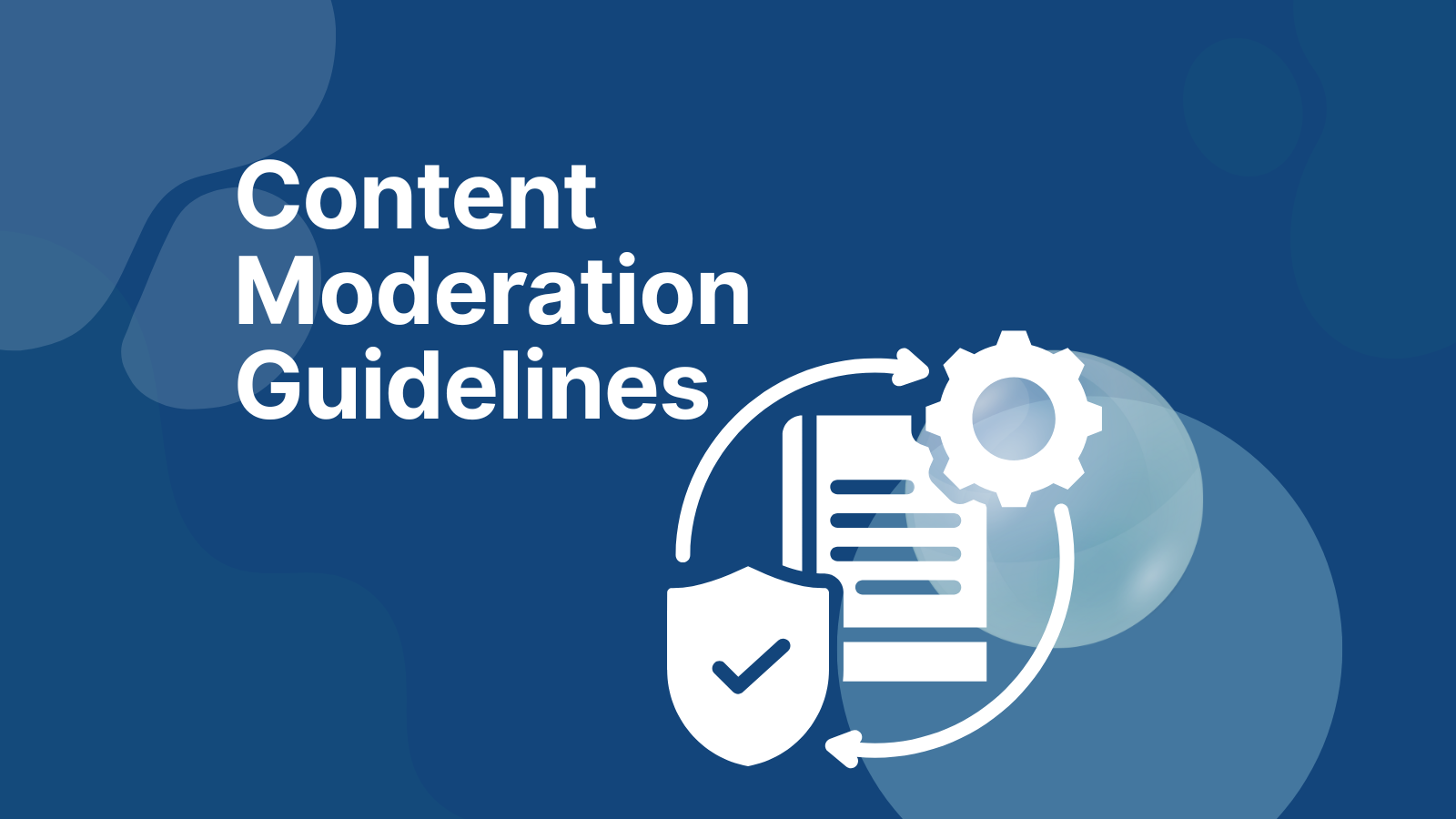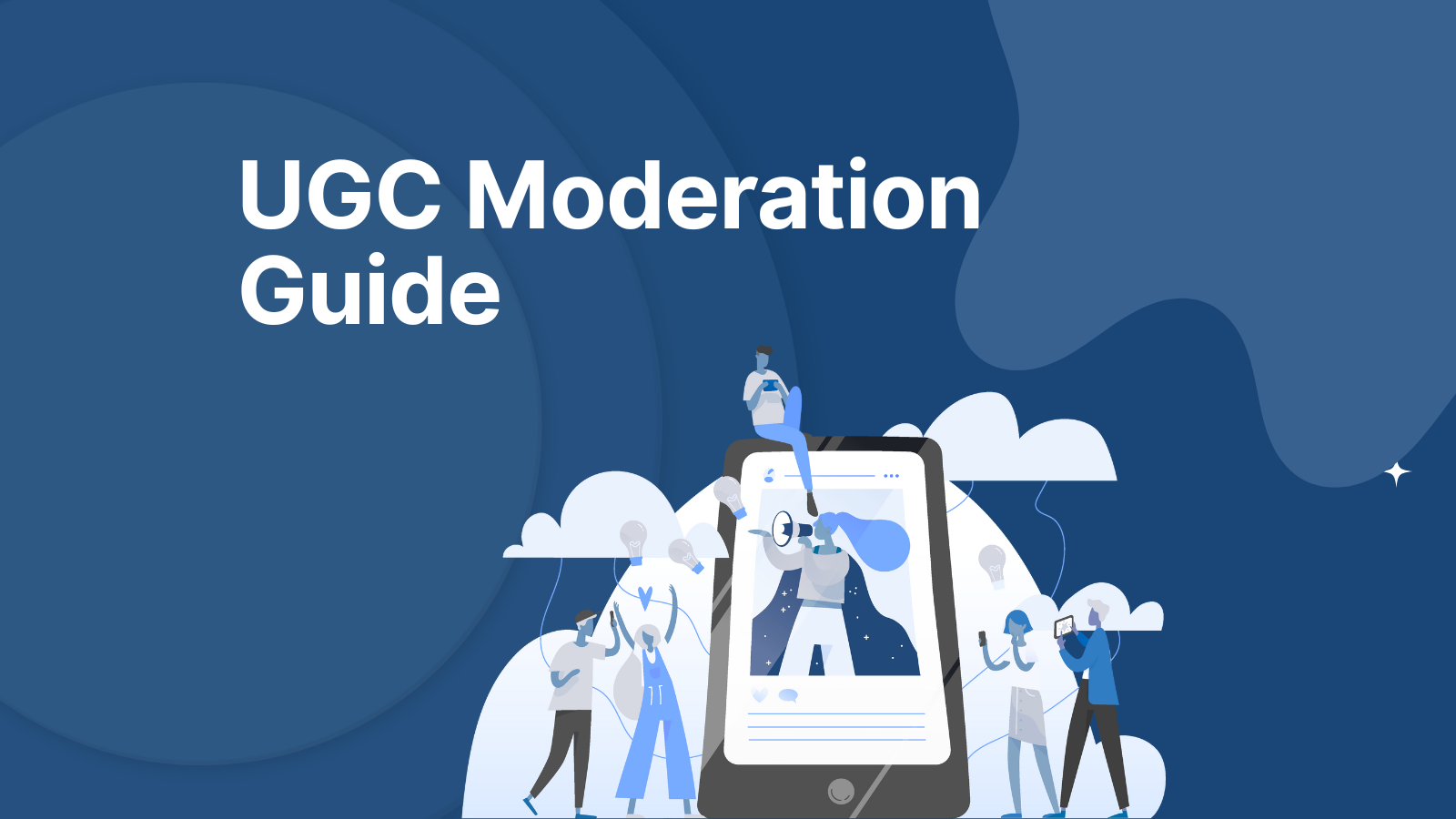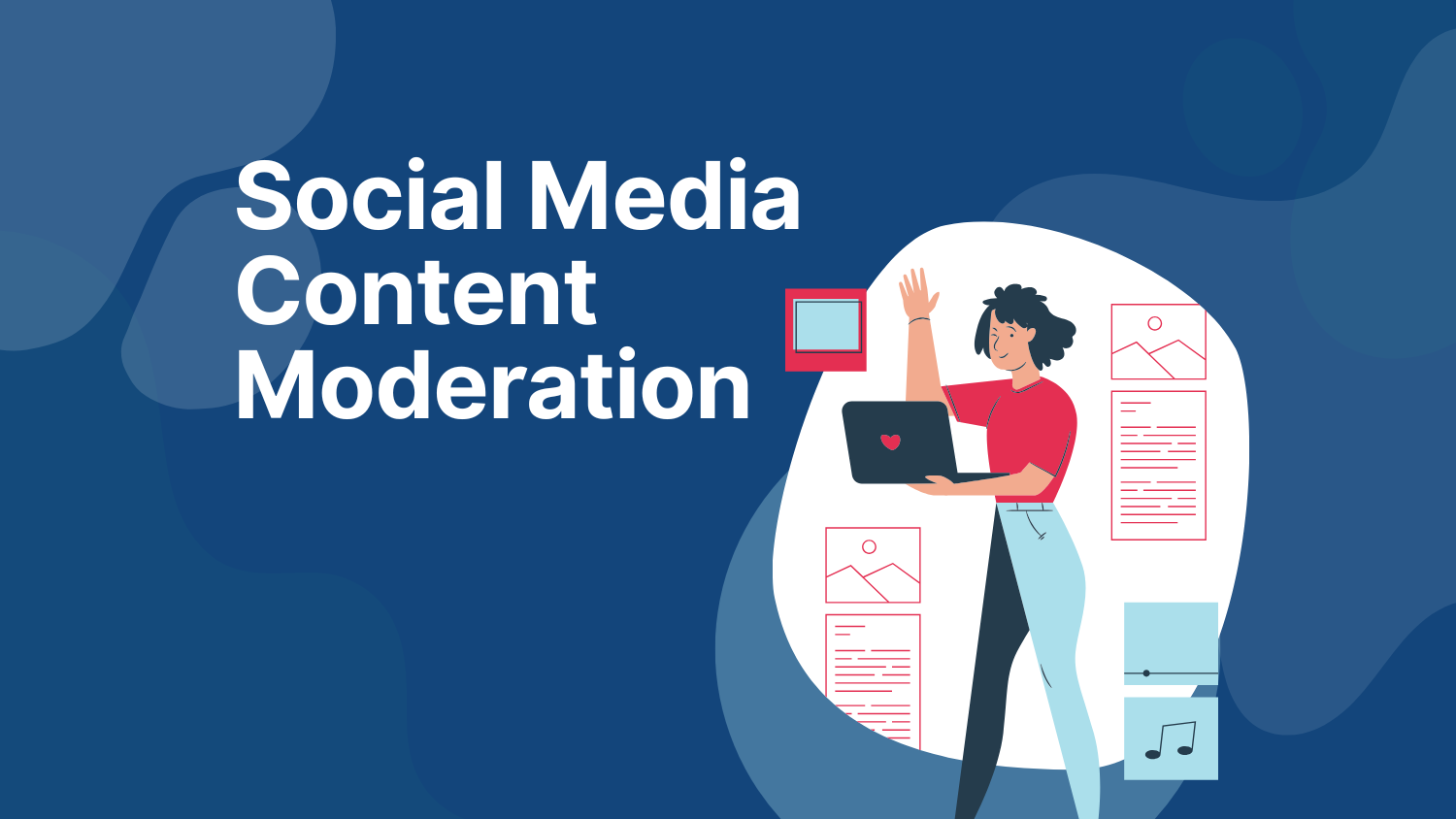Content Moderation Guidelines: Best Practices for Safer Online Communities

The internet is built on user-generated content (UGC), posts, comments, reviews, videos, photos, and interactions. While this creates amazing opportunities for connection and sharing, it also presents significant challenges. Without the right moderation practices, online platforms can quickly become toxic, unsafe, or even illegal.
Content moderation guidelines are essential to managing these challenges. They’re not just rules for keeping harmful content off the platform, they help shape a positive, productive space for users and ensure that the platform adheres to legal and ethical standards.
In this article, we will dive deep into content moderation guidelines, why they’re critical, and how to implement them effectively to create a safe, healthy online environment for your community.
What Are Content Moderation Guidelines?
Content moderation guidelines are the rules that govern what is acceptable and what isn’t on a platform. These guidelines apply to any form of user-generated content (UGC), comments, reviews, posts, videos, images, and even private messages. They are the cornerstone of any effective content moderation strategy.
.png)
Purpose of Content Moderation Guidelines
- Set Boundaries for Users: Establish clear rules for users about what’s acceptable behavior and what isn’t.
- Guide Moderators and Automated Systems: These guidelines serve as a reference for both human moderators and automated systems (AI) to review and act on content.
- Protect Users and the Brand: By filtering harmful or inappropriate content, these guidelines protect users and maintain the platform’s reputation.
- Ensure Legal Compliance: Adhere to local and international regulations, such as the Digital Services Act (DSA) in the EU or COPPA in the U.S.
Why Are Content Moderation Guidelines Important?
Content moderation is a foundational aspect of running a digital platform. Here’s why these guidelines are crucial:
1. User Protection and Safety
Content moderation ensures that harmful content, such as hate speech, threats, or explicit materials, does not make its way to the platform, protecting users from abuse and psychological harm.
2. Legal Compliance
There are numerous laws worldwide that require platforms to moderate content in specific ways. The EU’s Digital Services Act (DSA), for example, mandates that platforms must quickly remove illegal content, such as hate speech or terrorism-related material. Not adhering to these laws can result in hefty fines or legal action.
3. Safeguarding Brand Reputation
The content posted on your platform directly affects your brand’s reputation. A platform filled with offensive or harmful content can alienate users, drive advertisers away, and even damage the brand’s image permanently.
4. Promoting Positive User Engagement
Clear guidelines allow users to participate in healthy, respectful conversations without the fear of being harassed or exposed to toxic content. This encourages more engagement and strengthens the overall community.
5. Supporting Platform Growth
Safe, engaging platforms attract more users, generate more revenue (through subscriptions, ads, etc.), and build lasting partnerships. Moderation helps keep a platform scalable and secure.
6 Key Content Moderation Guidelines (With Practical Examples)
Here are six essential guidelines that every platform should incorporate into their content moderation strategy. We’ll also provide real-world examples for each guideline, showing how they apply across different types of platforms.
1. Set Clear, Accessible Community Rules
The foundation of any good moderation strategy is clear, detailed, and publicly accessible community rules. Without well-defined expectations, users can quickly become confused or frustrated.
Key Elements of Clear Rules:
- Acceptable Content: What kind of content is welcome on your platform (e.g., respectful conversations, helpful reviews, creative posts)?
- Prohibited Content: What is absolutely not allowed (e.g., hate speech, explicit material, illegal content)?
- Platform-Specific Restrictions: These might include rules for product listings, profile pictures, or specific language-based restrictions.
Example for a Social Media Platform: “We do not allow hate speech, harassment, bullying, or threats. We want our platform to be a space where everyone feels safe to express themselves.”
Example for an E-commerce Platform: “Product listings should not include offensive language, misleading descriptions, or prohibited items. All product images must reflect the actual item being sold.”
Make sure these rules are easy to find and understand. Place them in clear sections such as registration forms, FAQs, and a permanent footer link. Additionally, offer the rules in multiple languages for global platforms.
2. Define Clear Consequences for Violating Rules
Just as it’s important to define acceptable behavior, it’s equally important to explain what happens when users violate those rules.
Here are common actions that should be taken when users break the guidelines:
- Content Removal: Delete the violating content immediately.
- Content Editing: In cases where the content can be salvaged (e.g., removing offensive words), edit it rather than delete it entirely.
- Temporary Suspension: Temporarily ban users who violate guidelines (e.g., a 7-day ban for hate speech).
- Permanent Ban: For repeat offenders or severe breaches, permanently ban users from the platform.
- Legal Action: In cases of illegal activity (e.g., child exploitation or terrorism), escalate the issue to the authorities.
It’s important to specify the severity of the consequences:
- Minor Violations: Content removal or temporary suspension.
- Major Violations: Permanent bans or legal action.
Example: “If your comment violates our anti-harassment policy, we will remove it and issue a warning. Repeat offenders will be banned for 30 days. Severe breaches, such as hate speech, will result in an immediate permanent ban.”
Also, ensure transparency, provide users with a way to appeal moderation decisions, especially when consequences involve account suspensions or permanent bans.
3. Balance Free Speech with User Safety
Freedom of speech is important, but it must be balanced with safety. Platforms must allow open dialogue while ensuring that harmful content doesn’t disrupt the community or threaten user safety.
This means:
- Allowing diverse opinions and healthy debates.
- Removing content that crosses into harmful, discriminatory, or illegal territory.
Example for a Forum: “We value free speech, but we do not tolerate hate speech, discriminatory comments, or personal attacks. Please express your opinions respectfully.”
Example for a Dating App: “We encourage open conversations, but personal insults or explicit messages will not be tolerated. Everyone should feel safe using our platform.”
4. Combine Automated Moderation with Human Oversight
Using only AI tools or only human moderators is not enough. A hybrid model of automated moderation (AI) combined with human review is the most effective approach.
- AI Moderation: Automated systems can quickly detect and remove content that violates basic rules, such as spam, offensive language, or explicit content.
- Human Moderators: For nuanced content, like sarcasm, context-dependent language, or cultural references, human moderators can provide accurate judgment.
Example for a News Platform: “AI tools can flag offensive comments instantly, but human moderators review flagged content to ensure the context and intent are fully understood.”
This combination ensures both efficiency (AI handles large-scale content quickly) and accuracy (humans handle edge cases).
5. Encourage User Reporting (Community Flagging)
Let users play an active role in maintaining the integrity of the platform. By allowing users to report inappropriate content, you create a sense of community ownership and encourage users to uphold the standards of the platform.
- Simple Reporting Tools: Offer a visible “Report” button next to every post, comment, or image.
- Transparent Process: Clearly explain how the reporting system works, how quickly reports are reviewed, and the possible outcomes.
Example for a Social Media Platform: “If you see any content that violates our community guidelines, use the ‘Report’ button to flag it for review. Our moderators will assess the content within 24 hours.”
This empowers the community and helps identify harmful content faster, especially in large or fast-moving communities.
6. Moderate All Types of Content (Beyond Text)
Content moderation should cover all forms of user-generated content, including:
- Text: Comments, posts, and messages.
- Images: Profile pictures, posts, and shared media.
- Videos: Live streams and video uploads.
- Links: Shared URLs or affiliate links.
- Live Chat: Messages in live streaming or messaging platforms.
Ignoring certain types of content, like images or videos, leaves gaps in the moderation system that bad actors can exploit.
Example for a Video Platform: “All videos uploaded to the platform are checked for explicit content, and user comments are moderated to ensure they’re appropriate.”
Example for a Marketplace: “Product listings, including images and descriptions, are subject to review to ensure they comply with our standards and avoid offensive material.”
Moderating all content types ensures a comprehensive approach to safety, leaving no room for harmful or inappropriate material.
Best Practices for Writing Effective Guidelines
- Be Specific: Clearly define acceptable and unacceptable content. Instead of vague terms like “Be respectful,” give concrete examples (e.g., no hate speech, no spamming).
- Be Transparent: Make sure users know how to report violations and understand the consequences of breaking the rules.
- Keep It Updated: Online trends, language, and behaviors evolve quickly. Review and update your guidelines regularly to reflect these changes.
- Make It Accessible: Ensure that users can easily find the rules, whether on the registration page, footer, or FAQ.
- Offer Multilingual Support: If your platform has a global user base, provide guidelines in all major languages to avoid confusion.
Final Thoughts: A Long-Term Investment in Safety, Trust, and Growth
Content moderation guidelines are not just about policing the content on your platform, they are an investment in your community’s safety, your platform’s integrity, and your long-term growth. Clear, actionable guidelines help ensure users feel safe, respected, and valued, while also protecting your platform from legal issues and reputational damage.
Whether you’re managing a social media platform, an e-commerce marketplace, a gaming community, or a news website, implementing the right moderation practices is essential for creating a healthy, dynamic, and thriving online environment.
Want to learn more?
Check out our case studies or contact us if you have questions or want a demo.















